Everybody loves a good five-pot, and there have been plenty of good five-pots over the years. Audi and Volvo are probably the first names that spring to mind when you hear the glorious warble of a five-cylinder engine, but there are other five-star performers to choose from.
We’re not saying this is an exhaustive list of the best five-cylinder classics, but there should be something for everyone, from a humble hatchback to a scintillating seven-seater. Forget a 5-4-3-2-1 countdown; this list should start with 1-2-4-5-3…

Audi RS2
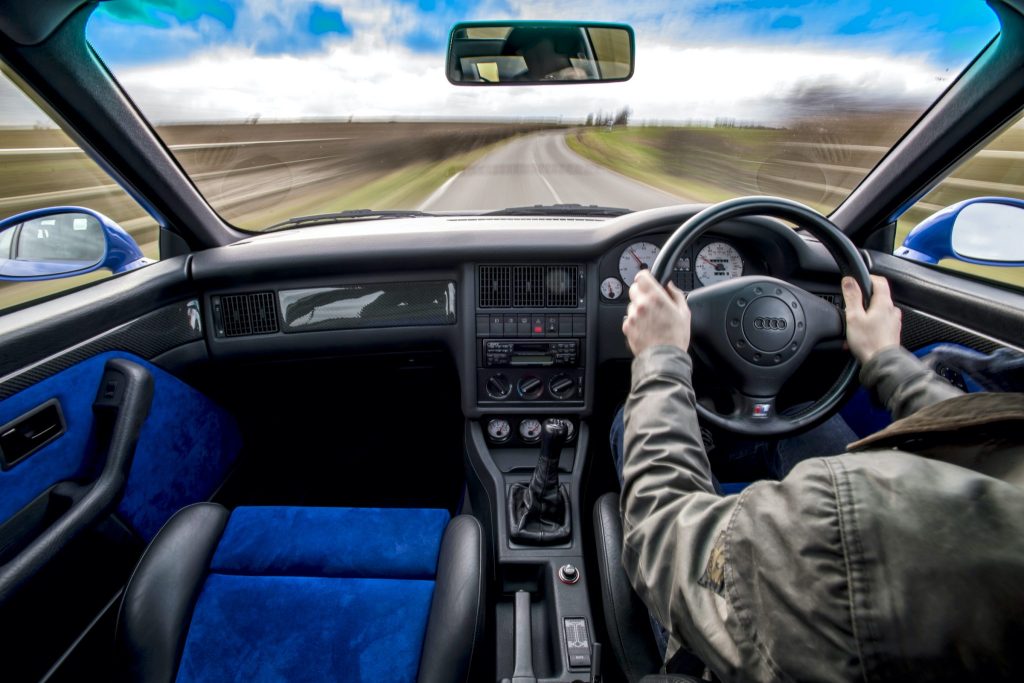
Audi presented the world’s first five-cylinder petrol engine in 1976, when it debuted into the second-generation Audi 100. The five-pot, with its familiar 1-2-4-5-3 firing sequence, was central to Audi’s growth, with a turbocharged version arriving in 1979 in the 200, followed a year later by the legendary Ur-quattro. Today, the Audi five-pot lives on in the likes of the RS 3 Sportback, TT RS and RS Q3.
This list of glorious five-pots could have been dominated by Audi models, but we’ve opted for the RS2. Another performance car developed with input from Porsche, just 2981 cars left the Stuttgart factory between March 1994 and July 1995, and only 180 of them were right-hand drive. You can read about the off-beat thrum of Audi’s five-cylinder engine in our Retro Rewind story from last year.
Volkswagen Golf V5
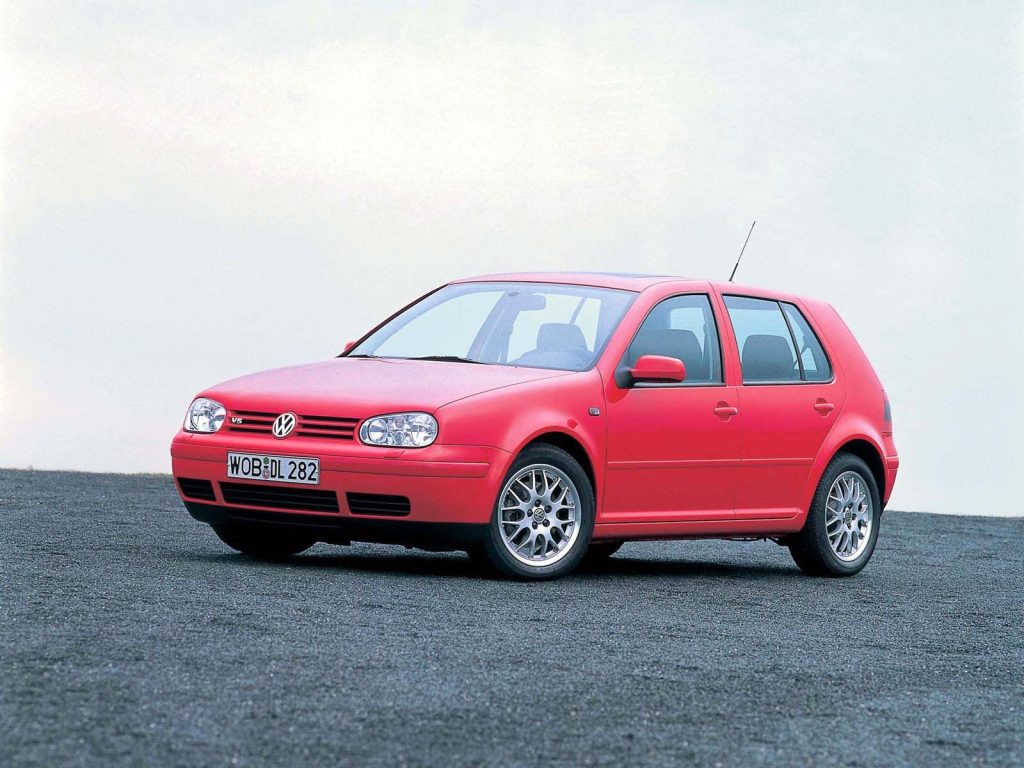
Even the most ardent Golf GTI fans would accept that the Mk4 wasn’t the car’s finest hour. Stiffer suspension, bigger wheels and a few badges weren’t enough for the Mk4 to rekindle the magic of the Mk1. On the plus side, the Mk4 did spawn a couple of crackers in the form of the R32 and the V5. As evo magazine said in 2001: “the Golf hot hatch [isn’t] dead, it just rides by a different name: V5”.
By then, Volkswagen had upped the power of the 2.3-litre five-cylinder engine by 20bhp to 170bhp, resulting in a 0-62mph time of 8.2 seconds and a top speed of 139mph. But it’s the soundtrack that will live longest in the memory. “The V5 has the best singing voice; something between a growl and a warble and unusually satisfying,” was evo’s assessment. The V5 – essentially a VR6 minus a cylinder – could also be found in other Volkswagen Group cars, including the Seat Toledo, which offers the majesty of a five-pot with even more of an understatement.
Land Rover Defender Td5
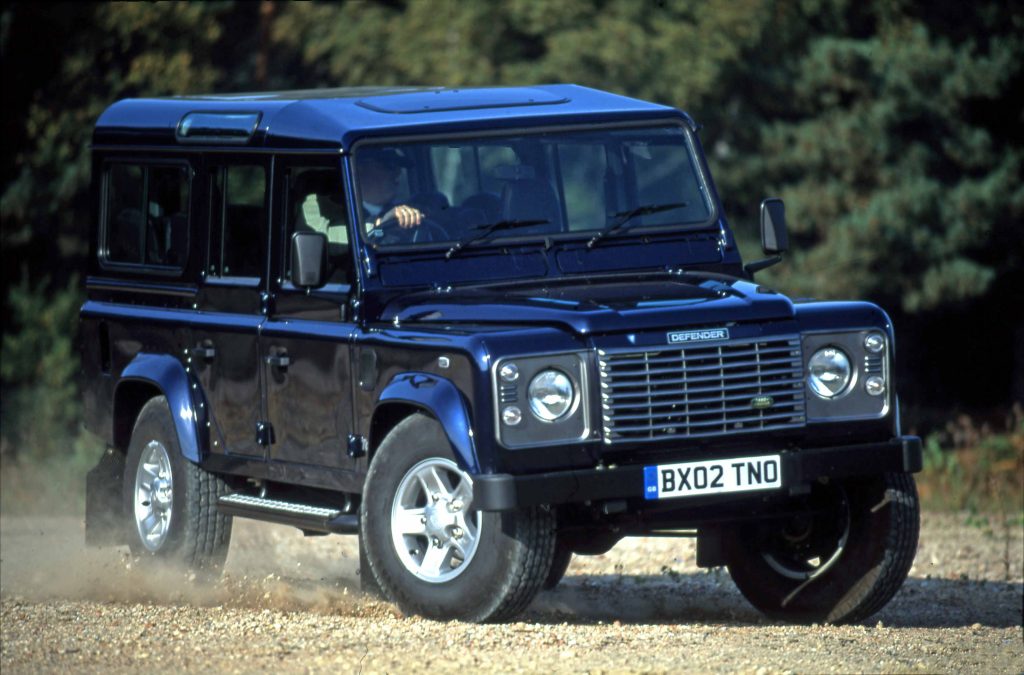
Ditching the trusty 300Tdi for the Td5 was seen as step backwards by Land Rover purists. Gone was the ‘fix it with a hammer’ nature of the old unit, with the new motor ushering in an era of ECU engine management and electronic injectors. The Td5, launched in 1998, was the last Land Rover-derived diesel engine, living on until 2007, when it was replaced by the 2.4-litre Duratorq engine from the Ford Transit.
By then, the Discovery 2 had bitten the dust, making the Defender the last bastion of five-cylinder Land Rover. Early reservations about the Td5 made way for general acceptance, especially once its reliability had been proven. Maintenance is essential, but there’s always a ready supply of Td5s being ripped out of rust-ravaged Discoverys.
Mercedes-Benz 240D
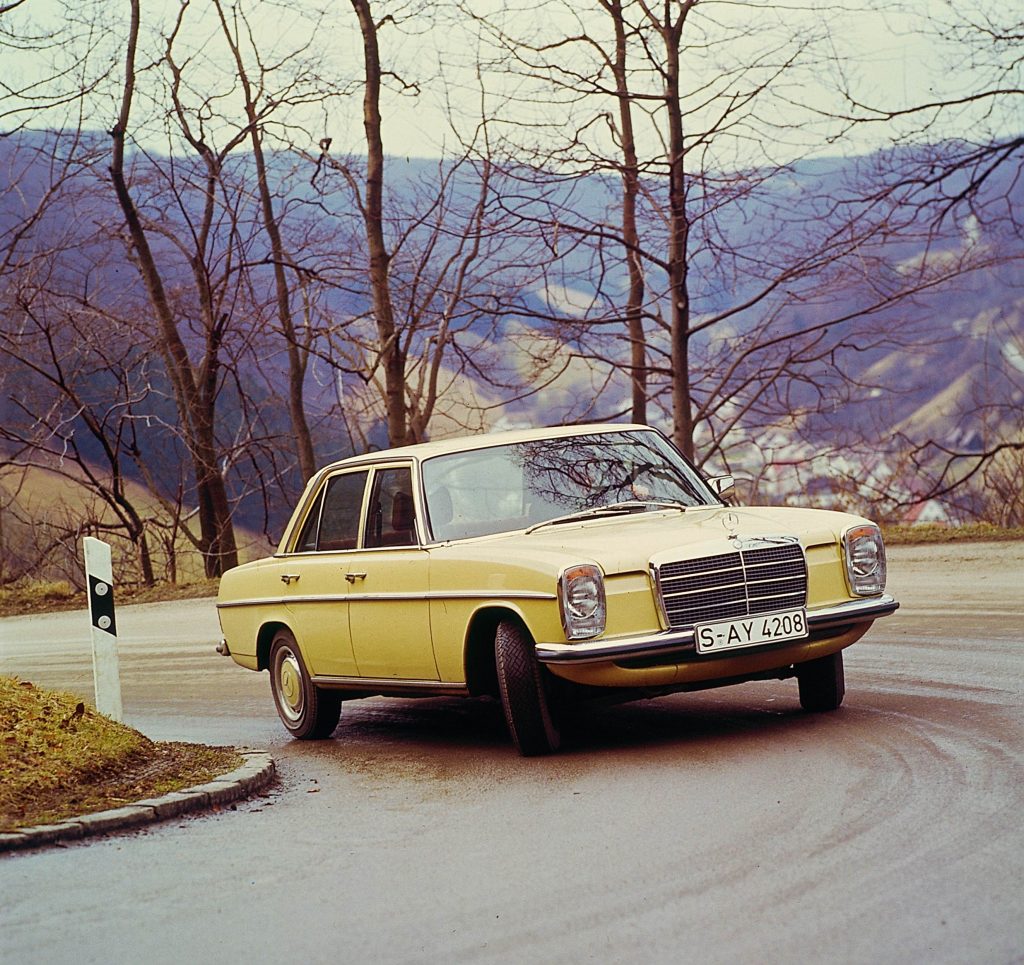
It wasn’t the first five-cylinder diesel engine – they were used previously in commercial applications – but the Mercedes-Benz OM617 was the first five-pot oil-burner to power a mass-produced passenger car. This was in 1974, when the Mercedes-Benz 240D 3.0 was the fastest diesel-engined car in the world. Don’t get too excited; the big Merc could crawl to 62mph in a lethargic 19.9 seconds. It’ll take you about the same time to reach the end of this feature.
The Mercedes five-pot diesel made its name in the 123-series, with the saloon and wagon versions proving their worth as trusty and durable taxis, with many still in use to this day.
Volvo 850 T-5R
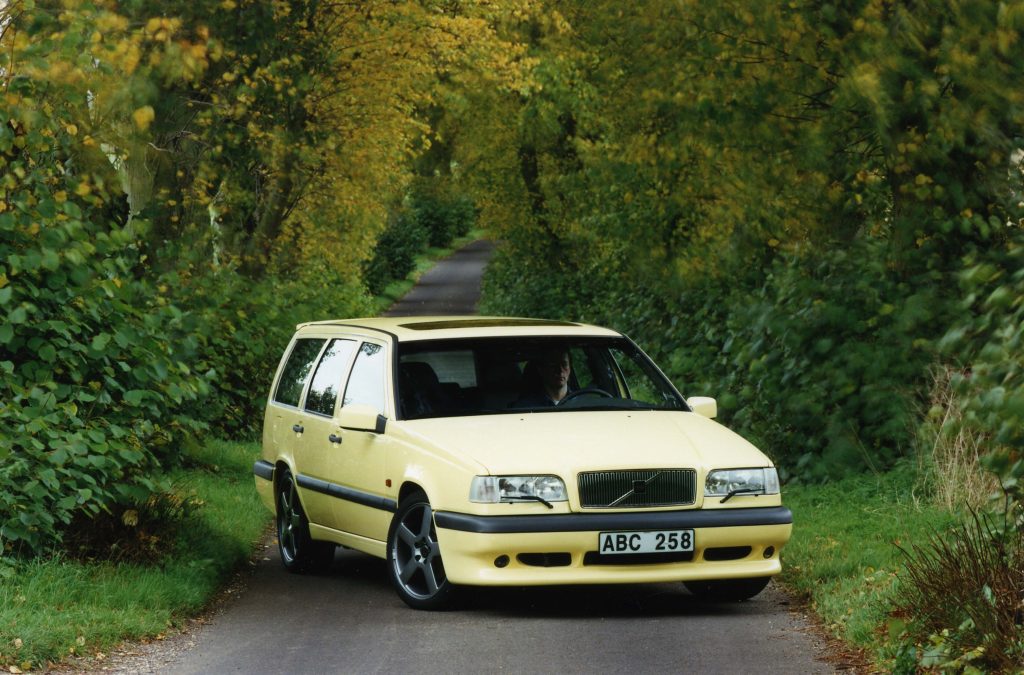
To many people, this is the definitive five-cylinder car of the 1990s. It’s also one of the most unlikely performance cars of a generation. The Volvo 850 T-5R arrived here in 1994, just a year after the T-5 version, and coinciding with the 850’s exploits in the British Touring Car Championship. It didn’t matter that the race car was powered by a 2.0-litre engine, because the halo effect worked wonders for Volvo’s sales department. Race on a Sunday, sell on a Monday, etc.
The T-5R’s 2.3-litre five-pot produced 240bhp – an increase of 15bhp over the T5 – which was enough to propel the ‘yellow brick’ (two other colours were available) to 60mph in 6.9 seconds, hitting a top speed of 155mph. Impressive figures, even today. Volvo enlisted the help of Porsche for the suspension and interior – although the harsh ride comfort and challenged traction suggest Porsche never quite managed to nail it – with both estate and saloon versions available. It’s the wagon you want, in Cream Yellow, obviously.
Ford Mondeo 2.5T
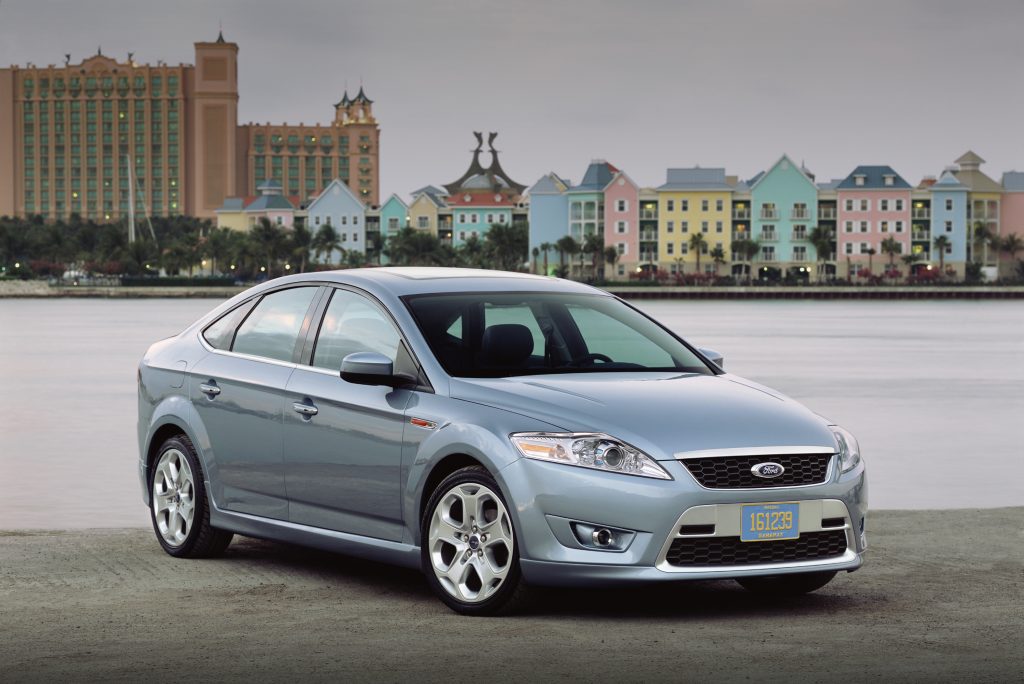
We’d label the Mk4 Ford Mondeo 2.5T a ‘Q-car’, but in truth, it’s a car with Bond appeal. The Mk4 Mondeo was the first car driven by James Bond in the Daniel Craig era, with 007 using a pre-production car to drive to the Ocean Club in the Bahamas. For the full effect, you need to find one in Titanium X trim with the glorious 18-inch Y-spoke alloys, also found on the exuberant Focus ST. We’ll resist the urge to say something about the smaller wheels leaving you feeling less shaken and stirred.
The 2.5T was a slow seller – there were just four available on Auto Trader at the time of writing – but your patience will be rewarded with a peach of an engine. With an available 217bhp at 5000rpm, the Mondeo will sprint to 60mph in 7.3 seconds in saloon form, with the estate completing the dash in 7.5 seconds. The top speeds are similar: 152mph for the saloon and 150mph for the estate. In Titanium X trim, you’ll have enough gadgets to shame Q.
Fiat Coupé 20v Turbo
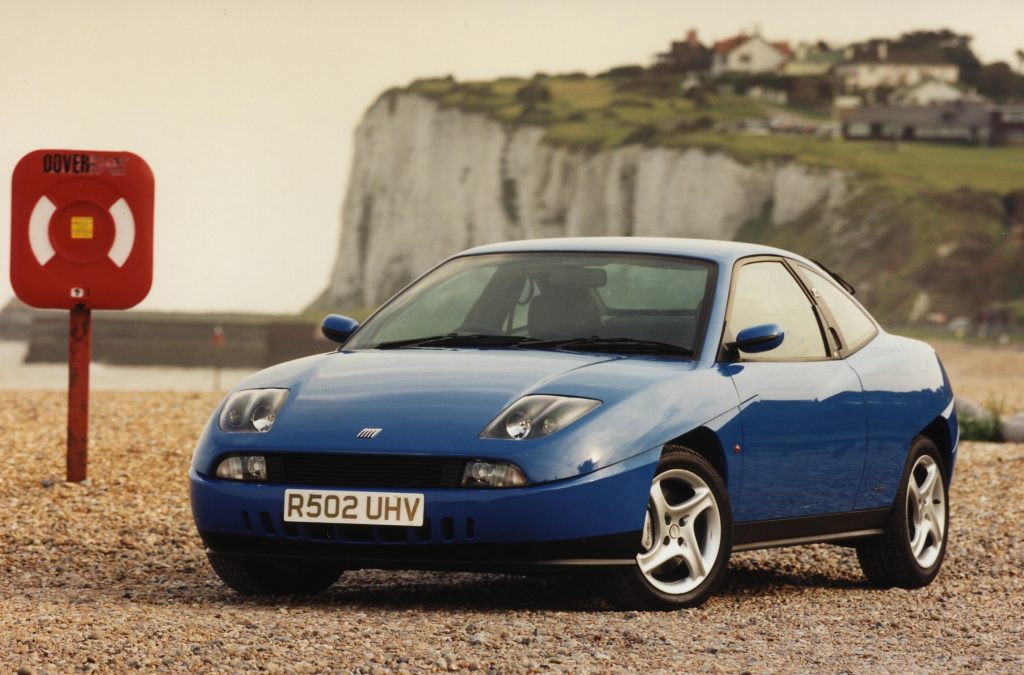
We were tempted to go into full niche mode by selecting a Stilo, Brava or Marea, but our Fiat five-pot of choice is the Bangle-tastic Coupé 20v Turbo. Although it launched in 1993, Britain’s drivers would have to wait until 1995 to get their hands on the Coupé, first in 16-valve form, but later, in 1996, with new 20-valve five-cylinder engines. In turbocharged guise, the Coupé was properly quick, especially in 1998, when the arrival of the six-speed gearbox upped the top speed from 149mph to 155mph.
Around 73,000 were built over five years, with the 20v Turbo the most popular model in the UK. A quick look on the HowManyLeft website suggests that it accounts for around two-thirds of the surviving cars. It’ll be harder to find a Stilo Abarth, Marea or Bravo HGT, but that doesn’t stop us dreaming.
Renault Safrane
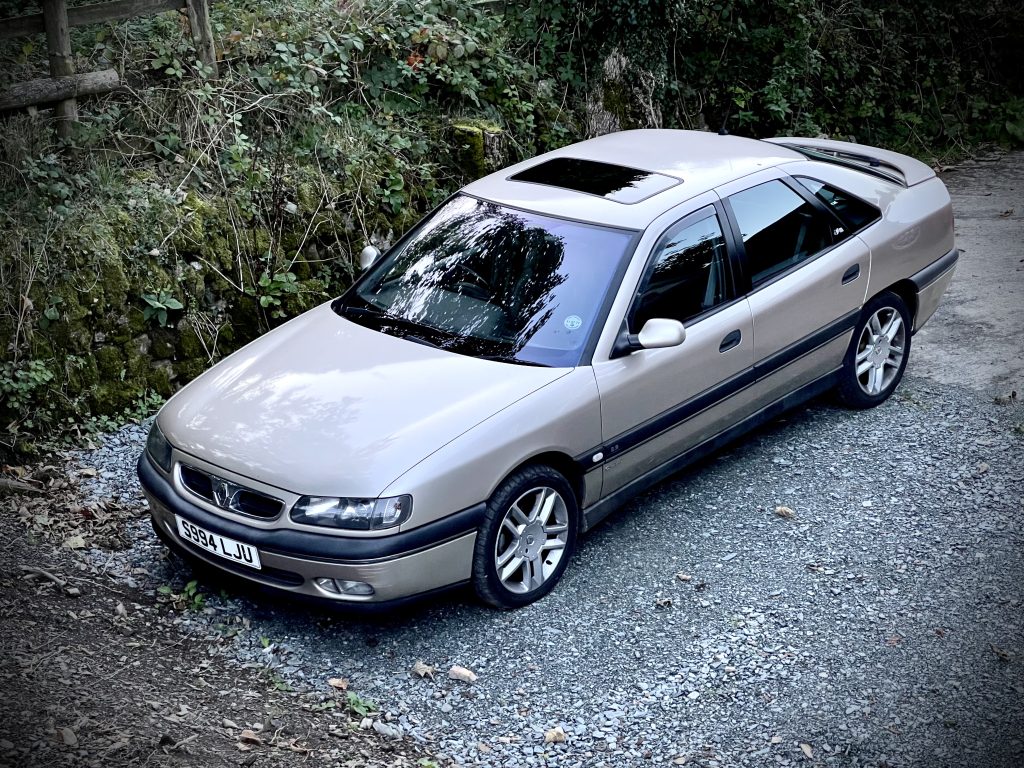
The Renault Safrane is arguably the most surprising five-cylinder car on our list. Renault revised the engine line-up as part of the 1996 facelift, with the Safrane gaining a pair of Volvo-sourced units. One was a 2.0-litre producing 138bhp, while the other was a more interesting 2.5-litre five-pot producing 168bhp. It’s actually a 2435cc engine, but Renault elected to round it up, rather than down. Something about looking good in the office car park, probably.
It’s not particularly quick; the 0-62mph time of 10.5 seconds is just fractionally better than the 2.0-litre manual’s time of 10.2 seconds – blame the AisinWarner four-speed auto ’box – but when you combine the soundtrack with the Safrane’s oh-so-comfortable leather seats, there are few better ways to cross a continent or two. Your author should know because he’s just been given the example pictured…
SsangYong Musso
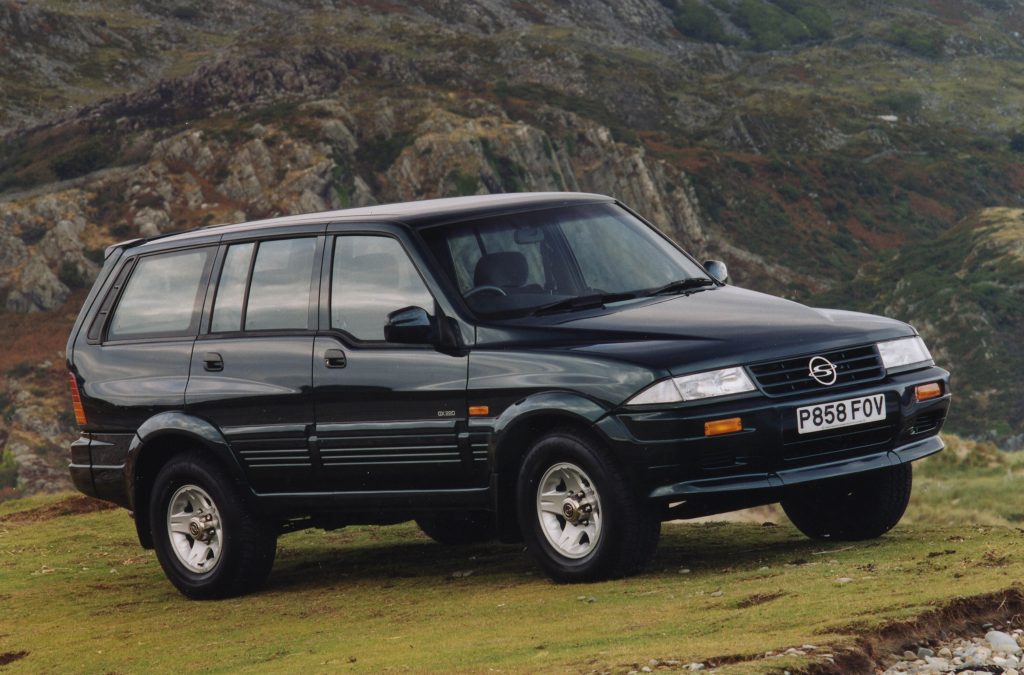
If you thought the Renault Safrane was a wildcard, we’re about to throw you another curveball. Thanks to a licensing deal with Mercedes-Benz, the SsangYong Musso was offered with a 2.9-litre five-cylinder diesel engine. (There was also a non-turbocharged version, which couldn’t outrun a glacier.) Would you believe us if we told you that the GX 220, with its Mercedes 3.2-litre 24-valve petrol engine, was one of the original performance SUVs? Thought not.
Giles Chapman describes the performance of the diesel as “hard work”, “painfully gutless” and “a rowdy assault on the ears”, but we reckon it’d be a shoo-in for next year’s Festival of the Unexceptional. If you’re struggling to find a SsangYong, you might have more luck sourcing a Daewoo version.
Ford S-Max 2.5T
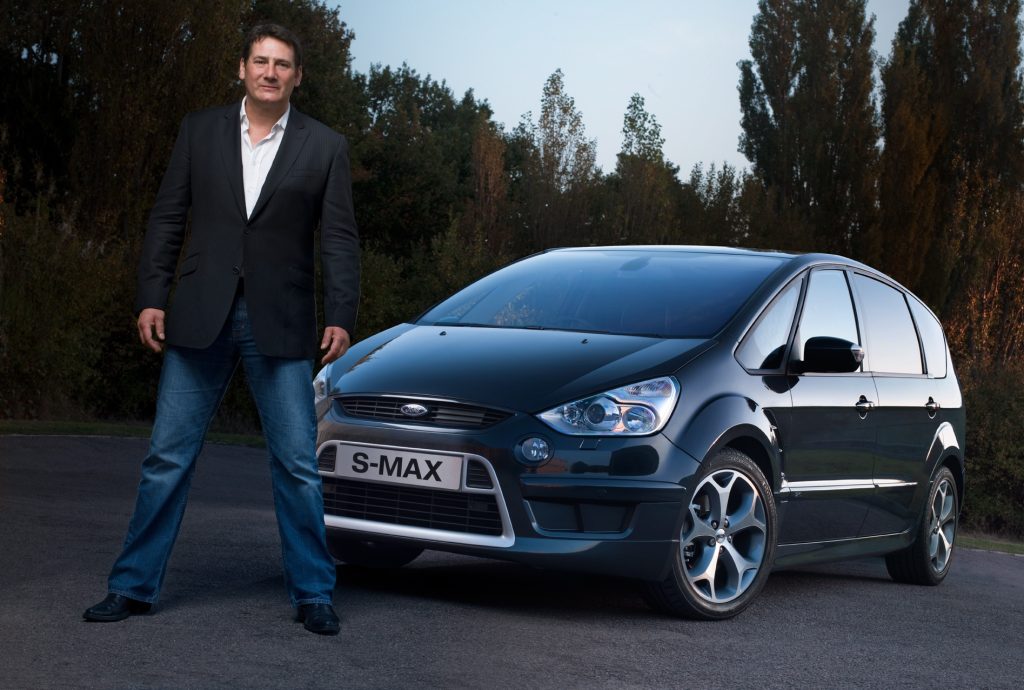
Our final choice is arguably too new for the pages of Hagerty – and we’re feeling guilty for not including the Acura Vigor, Ford Focus ST/RS, Volvo C30 T5 and various Audis – but there’s something appealing about the Ford S-Max ST. Yep, a seven-seater with a 217bhp Focus ST engine.
evo described the soundtrack as “a faint but pleasant backbeat”, while Autocar likened the car to a “powerful estate car”. The S-Max has always been the MPV of choice for enthusiastic drivers, so stick the 2.5T on your shopping list when your other half makes a comment about buying something sensible.
Yes, we know the photo shows an S-Max with a diesel engine, but the internet needs more pics of Tony Hadley, lead singer with Spandau Ballet, alongside a Ford MPV. It’s gold.
We’ve picked some of our favourite five-pots, now it’s time to name yours. If you’ve owned or driven one, share your experiences, below.
Read more
Take a chance on me: The £200 Renault Safrane that paid off
9 key moments in the history of the Ford Mondeo
Unexceptional classics: Executive car edition










For several years now I have been running a Mercedes ML 270 with five cylinders, other than a niggle with the “Black Death” which seems to plague this model, a new inlet solved this and restored the performance.
Much more economical than my previous V8 for litre Range Rover, also overall far cheaper to run, no silly air bags, deceitful computer system that tells the driver that at a -25c overnight rest, the gearbox is overheating. How ?
Even by today’s standards my 18 year old Mercedes still keeps up with the traffic, remains as comfortable as my “Silver Shadow” and can shift pretty hefty loads. Long live 5 cylinders.
My own list of five cylinder cars owned or driven is dominated by Audi – an original S4 (Audi 100 Mk2), RS2, 200 Quattro, 2 Ur Quattros and two Short Wheelbase Quattro Sports. The only interloper is the Volvo 850 owned by my Father. Thinking about the topic I have driven cars with two, three, four, five, six, eight, ten and twelve cylinders – surely there is another story there!!
My present daily 2009 Alfa Romeo 159 ti 2.4lt diesel is also a 5 pot . On retirement , I still had my workhorse Toyota 4.2lt Landcruiser but being into motorsport , I still wanted to be able to tow a Brian James race trailer but didn’t want to keep the big cruiser. I discovered the Alfa was an awesome car at 210bhp ex factory plus loads of torque . A good looker always gets my attention , after that the driving experience impressed me , great acceleration and a real driver’s car . Will tow the trailer easily without drama plus load at 60mph and over 30mpg , Result was I bought the Alfa and sold my cruiser . It’s now completed just over 100,000 miles and runs faultlessly , giving me 40mpg plus without the trailer on a long journey , 35mpg around short local trips
I had a BMW 325d new in 1993 wonderful engine
That was the straight-six, if I remember. It really moved the game on.
You missed a great one IMHO: The Alfa 156 Sportwagon with the 20v 5cyl.
Having had 35 years in the motor trade, I had a few 5 potters go through my hands. I found the Audi was refined and well balanced but the Land Rover was a failure especially after finally designing the trusty TDI that regained the LR trust that was much needed due to their feeble 2.5 Turbo in the Defender and that monster of a Italian VM stationary engine in the RR. There was a lucrative market in the late eighties and early nineties when the trusty Isuzu 4JB1 Diesel engine was fitted into LR products, but that’s another story.
I’ve had two 5-cyl Audi 90 Quattros, the first a 1986 2.2ltr 10-valve and the second the later 1990 2.3ltr 20-valve version.
The earlier 10-valver was a fantastic tow vehicle, would pull a 20ft Phantom power boat with V6 Merc up a slipway with total ease, no clutch burning. It was vastly superior to a Landrover in this respect – absolutely phenomenal torque with lockable centre and rear diffs. The latter 20-valver was quicker overall, but a bitter disappointment in comparison.
Torque will always beat Horsepower in the usefulness department.
I miss that early Audi dearly
Drove my bosses 1978 Audi 100 regularly in my late teens 2.2 5 cylinder it was great 1st automatic I drove too.
Love the Audi 5 pots. My first was a 89 Audi 100 Avant 2.2E. Fantastic build, Granada sized but weighed little more than the contemporary Golf of the time. The engine was smooth, very torquey and surprising economical. My second was a 86 Audi Coupe GT with a 2.0. A fantastic looking car with fantastic steering and very roomy inside (puts an A5 to shame despite its vast proportions). The 2.2 engine was much better though and made the Avant a much faster car although the 2.0 with it’s shorter stroke felt happier at higher revs. Moved onto straight 6 BMWs now but still miss that 5 cylinder warble!
In 2010 I brought a W-reg Fiat Marea Weekend HLX in black for £200 near Oxford listed as spares/repair (clutch slave cylinder, usual failure), I ran it for about 10 months in total but all my uni mates had a real soft spot for it. I think because it had a slight Audi-esq soundtrack to it (especially rolling through the gears in the snow in a pub car park…). It revved to 7,000 rpm a treat, 1st gear it pulled really well, plus it was £150 to insure fully comp.
I have since aquired a W-reg Fiat Coupe 20v non-turbo because i missed the Marea, but it’s now near on impossible to find any Marea 20v or Bravo HGT, they have litteraly dissapeared.
I do regret scrapping the Marea, but I was penny pinching at uni.
My Wife runs a VW Bora . She has had it for 18 yrs and refuses to change ,she says when she is out in it she is the “fastest little old Lady in town “
My daily driver is a 5 pot T5 Multivan. Despite having 340K kms on the clock it still returns 45mpg. I look forward to many more low rev kms.
I had a white Volvo T5 saloon in ’94 which I replaced with a T5R wagon in ’97 in the most amazing metallic turqoise. Such macho cars and my favourite trick was flicking into sport mode on the saloon which was an auto and dropping everything behind me. Worked well on the autostrada where the big Alfas would come to within a couple of metres of my rear with their indicator permanently on at about 80mph and then flick the switch and it was arrivederci Alfa – Sweden 1 Italy 0. Childish but fun. The torque effect through the front wheels was crazy and you would feel like you were caught in tramlines in both cars as you manfully steered away from the gutter (on UK roads) under hard acceleration. You had to work really hard for full traction on the R from launch. Front tyre wear was an environmental catastrophe. The days of Blur vs Oasis on the radio, pure nostalgia.
Feel like we were there with you, Richard…
Ur Quattro was so good, I bought one for each of my staff. We did 400k miles per annum. Then progressed to RS2. One guy still uses my RS2 to this day!
Holy smoke. That is some mileage, Paul. For each Quattro, each year?
Wish I worked for your company!
I had a 2007 159 Sportwagon with the 2.4 TDM. It also had the Q4 system, a fabulous drive with no worries about staying on gritted roads. I kept being asked about the Q4, and loved the looks of surprise when I explained.
Had a few niggles with glow plugs and DPF clogging, but was sad to see it go after 4years/60k miles. Should have kept it…..